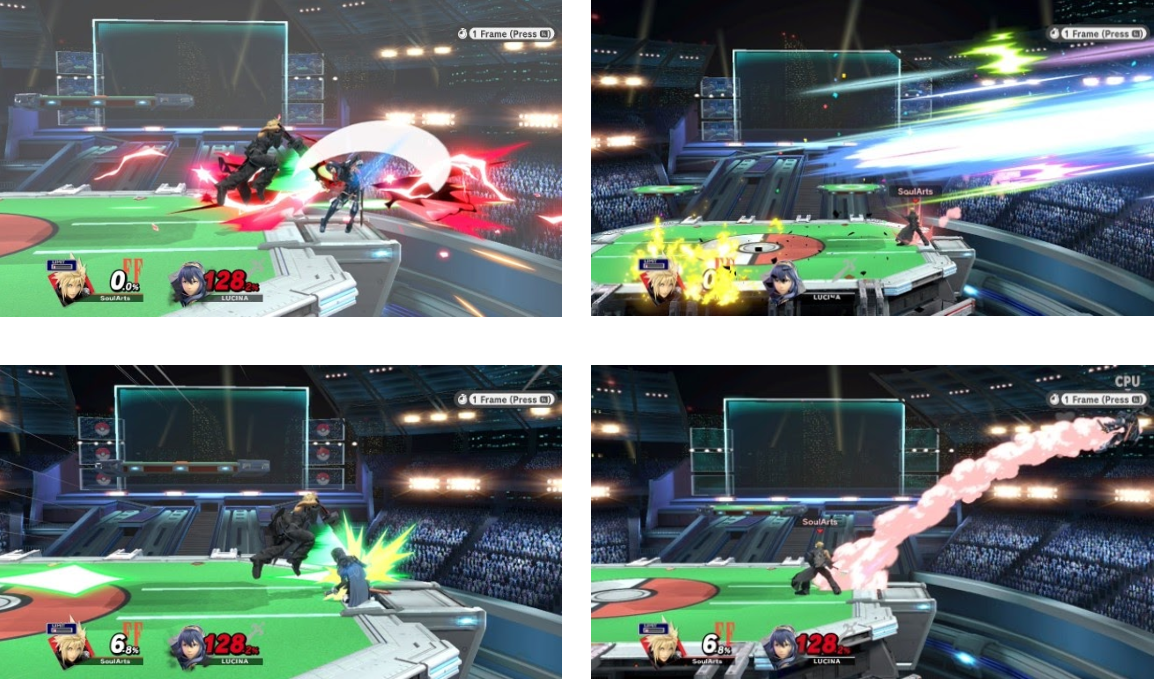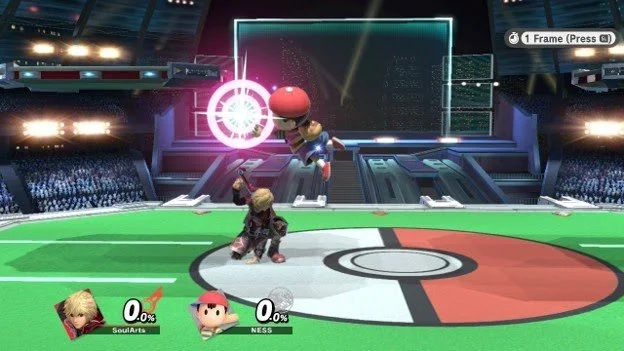Smash Ultimate's Most Underrated Mechanic
by Sean Caliendo (SoulArts)
Smash Ultimate is a game that’s coming up on 8 years old. Many mechanics have been carried over from previous games along with new ones introduced within Smash Ultimate. This game is an absolute treasure trove of hidden tech, complex mechanics, and many things that go on under the surface. For example, did you know that the amount of time you spend off stage directly affects how long your invincibility will last after grabbing the ledge? The more time spent off stage, the more invincibility you will have. Some small and widely unknown mechanic such as this one can have massive implications on recovery strategies. Or how about teching on Steve’s blocks? Did you know you cannot buffer tech on his blocks specifically? I can go down a list of many different niche mechanics and tech that are really useful that you probably don’t know about. But today I’m here to argue for one of Ultimate’s most basic mechanics that I believe is extremely overlooked: crouching.
When people bring up crouching, they usually say it's useful because of hitstun canceling. While Ultimate’s version of this is tame compared to Melee’s, it still has uses. In case you are unaware, if you get hit while crouching you will experience less knockback and hitstun. This is pretty useful, especially while you’re in the corner or in tight spots where a stray kill option might get you. The reduced knockback might be just enough for you to live that hit in what would’ve otherwise ended the set.
But I am here to say that I believe crouching’s best use is something that has nothing to do with its knockback reduction at all. It has to do with disarming your opponent’s pressure in neutral. First, let’s go a bit more in depth into what I mean by pressure.
When playing neutral there are many ways to threaten your opponent. Within close-quarters combat (cqc), or even just Ultimate as a whole, being in the air is ideal. You have access to safe aerials, timing mixups, combo starters, etc. For most characters: the core of their kit lies within their aerials. Clearly, being in the air is vital for most of the cast. So the question then becomes: how do I pressure my opponent while they are trying to get into the air aka jumping? Simple: poke at them with rising aerials! One very strong aspect of rising aerials is that they’ll also hit standing opponents. Even if you guess wrong about them jumping, odds are you’ll still hit them or their shield. You might even get a combo opportunity depending on your character. This is where crouching comes in, and why it, in my opinion, is so strong. Crouching, in a lot of cases, will disarm your opponent's immediate pressure. Some characters really struggle to deal with crouching. Let’s take a look at a few cases.
Take Ness: a lot of his gameplan revolves around poking at you with a rising fair, gaining massive combo opportunities to set you up within his advantage state if it lands. It is Ness’ only real good way of being able to move forward in neutral. Ness’ rising fair and bair you can crouch under. So how does he approach you now? He can no longer poke at you and doesn’t have other good ways of moving forward. Additionally, crouching after your aerials connect with his shield can also circumvent two of his best out of shield options. Of course, crouching isn’t perfect, and he can still find ways to hit you. Crouching in neutral won’t let you beat the best Ness players all of a sudden, but it does disable a good part of his gameplan.
Villager and Isabelle are two more great examples. Crouching is what I cite to be one of the reasons I was able to defeat Furararamen’s Isabelle so handedly. The core of these two character’s gameplan revolves around anti-airing you with their fair and bair. Isabelle wants to get a read for when you like to jump and swat you out of the air with a fair so she can move into cqc safely. Their rising fair is pretty unreactable for a good distance, making it hard to engage with her aggressively. Crouching is something that turns this advantage against them. Most characters are able to crouch under Isabelle’s rising aerials. She can still use fair/bair to hit crouches but now she has to fall first before using it. The significance of this is: her fair is now reactable! The extra time she has to take to fall before using this move can allow you to recognize the situation in time to avoid getting hit. You can now shield, swing with a disjoint, or even ironically jump over it. Her immediate pressure is now gone. With the rest of Isabelle’s kit being pretty bad, the character quickly falls apart with no reliable way to get damage on the board.
Fura’s immediate pressure is disabled - realizing that, his next move is to retreat and leave midrange.
The last example I’d like to talk about can apply to a lot of characters, but I’m going to use Sonic specifically. Sonic is great at wracking up damage pretty quick but can struggle to find kills if spin dash confirms are avoided. One of Sonic’s biggest strengths is obviously his speed, and with it, a solid burst range. His run up fairs and dash attack are scary to deal with in neutral. While his fair may not kill until pretty late (from the stage), it can set up for easy edge guarding opportunities. Sonic can also rely on bair for a stray hit kill on neutral. Typically reading jumps and applying a lot of corner pressure with it. Now let’s say you’re fighting a Sonic and you’re at kill percent in neutral, how exactly does he kill you when you’re crouching? His run up fairs and bairs to catch jumps, you will duck right under, and similar to Isabelle, his back air now becomes pretty reactable if he has to wait until he starts falling to use it. In the corner, his ability to quickly snipe jumps is also nullified (on top of the crouching potentially helping you live a killing blow if he does hit you). His already pretty bad stray kill power becomes way way worse with the introduction of crouching.
Did I ever think I would write 3 pages about crouching in Smash Ultimate? No. No I did not. However, I have come to realize the use and importance of this oh-so overlooked mechanic enough to the point that I wanted to make this my first article contribution to this site. Of course, this information isn’t universal. You might be reading this and play a character like Kazuya, who has a pretty high crouch and doesn’t benefit in the same way. Or even the opposite experience of playing a character like Snake, who’s crouch goes absurdly low and the benefits are even more exaggerated. You could also fight a character like Shulk or Pikachu who’s rising aerials hit low enough to not care much for crouching. It is up to you to lab and try to get the experience with utilizing crouches. See what works, see what doesn’t. I’m sure you can think of an obvious example or two *cough* *cough* Bayo ABK *cough* that you have already been utilizing before reading this article. All in all, I think crouching is a very strong tool that is great for promoting survivability, and removing a key aspect of your opponent’s pressure in neutral.
Thank you for reading this article if you have made it this far! I enjoy writing and I want to give specific thanks to Mario for pitching the idea of this site to me and for letting me on the project. I look forward to seeing what this passion project becomes! I hope to keep contributing as much as I can! As for said contributions, my articles will be more focused around Sports Psychology topics which makes this first one a bit of an exception. So be on the lookout for my future work! I hope you enjoyed reading and feel free to let me know any thoughts or questions!




